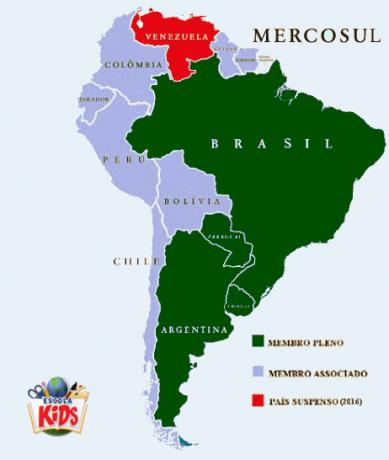Made up of more than a thousand islands in the Pacific Ocean, the Marshall Islands are located in Oceania. The country, whose territorial extension is only 181 square kilometers, is considered one of the smallest on the planet, has no land borders, being relatively close to the Federation of Micronesian States.
Two Marshall Islands atolls, Bikini and Eneuetak, were the scene of nuclear tests between the years 1946 to 1958. During this period, the United States of America (USA) carried out nuclear explosions with a power 100 times greater than that of Hiroshima, causing the water temperature to rise significantly, in addition to causing the opening of a 2-kilometer crater. diameter. As a result, the country became the region with the greatest radioactive contamination in the world.
The population of the Marshall Islands is made up of around 54.4 thousand inhabitants, with the majority residing in urban areas (72%). The highest concentration of population is recorded on the atolls of Kuajalein and Majuro, which houses the capital, Dalap-Uliga-Darrit.
The national economy is underdeveloped, requiring financial help from other countries, especially the United States of America. THE agriculture it is based on coconut, cassava and potato cultivation. The industrial sector, not very diversified, operates in the food, clothing and shipbuilding segments.
Do not stop now... There's more after the advertising ;)

Marshall Islands
Marshall Islands Data:
Territorial extension: 181 km².
Location: Oceania.
Capital: Dalap-Uliga-Darrit (Marujo's Atoll).
Climate: Equatorial.
Government: Parliamentary monarchy.
Administrative division: 33 municipalities.
Language: English and Marshallese (official).
Religions: Christianity 95% (Protestant 92%, others 3%), others 3.6%, atheism 1.4%.
Population: 54,439 inhabitants. (Men: 27,938; Women: 26,501).
Demographic density: 300.7 inhab./km².
Average annual population growth rate: 2.2%.
Population residing in urban areas: 72%.
Population residing in rural areas: 28%.
Population with access to drinking water: 94%.
Population with access to the health network: 72%.
Infant mortality rate: 30 for every thousand live births.
Currency: US Dollar.
Gross Domestic Product (GDP): 153 million dollars.
GDP per capita: $2,751.
External relations: World Bank, IMF, UN.
By Wagner de Cerqueira and Francisco
Graduated in Geography
Brazil School Team
Would you like to reference this text in a school or academic work? Look:
FRANCISCO, Wagner de Cerqueira e. "Marshall Islands"; Brazil School. Available in: https://brasilescola.uol.com.br/geografia/ilhas-marshall.htm. Accessed on June 28, 2021.


